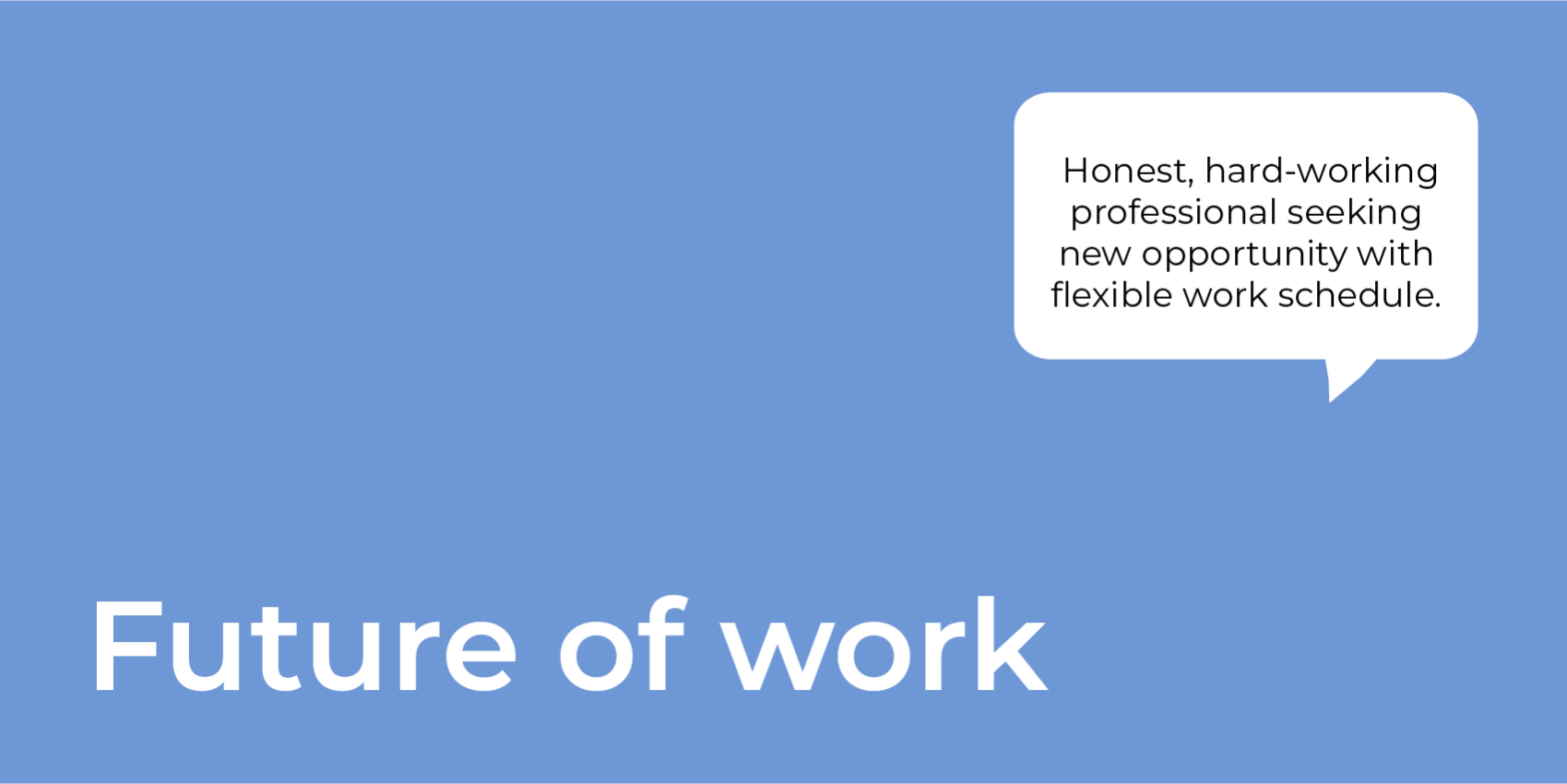Welcome to the new “normal.” Even under the ongoing threat of new variants, the US is continuing to open-up, with most schools back in-class and some organizations returning to the office. However, in the face of mounting burnout, stress, and the increasingly blurred lines between home life and work life, it will not be business as usual for the knowledge workforce going forward. Finding clarity in the remote versus in-office debate is key to optimizing both health and performance outcomes. Here is what we need to know about the future of work in a seemingly perpetual pandemic world.
Workers’ expectations have shifted
The option to work remotely has transitioned from a last resort to an expectation for the knowledge workforce. Joseph B. Fuller, professor of management practice at Harvard Business School says that “employees are unlikely to return happily to a workplace driven by the ‘old deal,’ in which the employer sets standard rules of employment…they will expect not only the right to determine the adequacy of workplace safety measures, but also expect employers to consider their individual circumstances.” Employees will expect issues such as health/safety protocols to be brought into consideration in the workplace.
Large corporations are recognizing the benefits of this shift in expectations. For instance, Microsoft is permitting part-time remote work as it reopens its offices to employees. Remote work can raise employee satisfaction by offering greater schedule flexibility and the ability to complete tasks from any location. A study examined the impact of the lockdowns on employee outcomes. Compared to pre-pandemic levels, the study found that “the number of tasks rated as tiresome dropped from 27% to 12%, and the number [they] could readily assign to others dropped from 41% to 27%.” The discipline required to complete tasks remotely coupled with a reduced sense of supervisor oversight facilitated greater personal agency. Lockdowns highlighted several perks of remote work, and the knowledge workforce recognizes them.
Burnout is on the rise
Despite this, burnout remains a pressing concern. A study by Indeed found that “over half (52%) of survey respondents are experiencing burnout in 2021” in comparison to 43% from a previous year. Remote work, with its heavy reliance on technology-mediated communication and lack of in-person interactions has taken its toll on workers. A study by NordVPN found we’re putting-in 3 hours more per day on average compared to pre-pandemic levels. Between political, environmental, and personal challenges and the demands of longer work days spent in front of a screen, it’s no wonder burnout is on the rise. Employers need to learn and recognize the symptoms of burnout to reverse this trend.
Prevent burnout by:
Practicing comprehensive listening
Most of our communication is nonverbal. In order to check-in with remote workers, leaders must listen to both spoken and unspoken messages. Video calls are a beneficial tool to reveal more communication cues than those delivered by audio alone.
Encouraging rest
Productivity is jeopardized in the face of fatigue and burnout. Encourage workers to take needed time off to rest and rejuvenate. Create a company culture focused on employee engagement and well-being, and rest is a crucial element. Consider offering incentives to promote recovery. For instance, companies such as WHOOP pay their employees a sleep bonus for getting 85% or more of their needed sleep each month.
Varying communication channels
Hours of video meetings and Slack chats can exhaust us. Alternate between video and voice-only calls to ease the need to be planted in front of a camera. Additionally, ensure attendance is required only for essential attendees to minimize meetings and optimize time spent on real work.
Fully Remote or Hybrid work is the future
Implementing a hybrid work model
According to Gartner, “a hybrid workforce is the future of work [sic], with both remote and on-site part of the same solution.” While remote work offers benefits, there remain crucial impediments to tasks that are simpler in-person. Amy C. Edmonson, Novartis Professor of Leadership says “working from home works for relatively independent tasks…being together matters when tasks are interdependent, require sharing tacit knowledge in fluid ways, and coordination needs are not scripted.” In-person interaction is the smoothest mode of synchronous communication. Additionally, it is easier to build a sense of culture when a group is gathered under one roof as opposed to being scattered around the world. Hybrid work offers the unique ability to partake in company culture while still providing flexibility. Examples include a number of firms now transitioning to a three day in-office schedule. Here are a few tips to implement a hybrid work model:
Focus on intentional interactions
Coordinating schedules among employees will maximize in-office time. Julia Austin, fellow at the Rock Center for Entrepreneurship suggests making “a team schedule, so the days in the office are the most meaningful and focused on connections, both scheduled and serendipitous.” Thoughtfully arranging schedules to facilitate in-person connection within and across teams can encourage collaboration.
Encourage open dialogue around varying health concerns
Given our varying levels of health concerns, facilitating communication is key. Point out policies that are in place to protect the health of team members. Ensure that teams feel comfortable returning to the office and are given opportunities to convey otherwise. Demonstrating empathy for health concerns is crucial for a successful transition to hybrid work.
Clarify expectations
When transitioning to a hybrid work model, it is important to set standards for in-person attendance and communication. Outline how much time teams are expected to invest in-person and remotely. To reduce pressure to maximize “face-time” with bosses, consider setting a cap on in-office hours. Alternately, if the expectation is to invest more time in-office than remotely, emphasize that.
Implementing a fully remote work model
There are multiple benefits to a fully remote work model. According to Forbes, offering fully remote work “results in an average of 12% turnover reduction,” along with reductions in expenses and better employee outcomes. Many companies are implementing a remote-only option. However, mitigating the downsides to remote work, such as a lack of in-person interaction, is essential for optimizing cohesion. Here are some tips:
Create digital spaces for interaction
Developing and maintaining connections with coworkers can be challenging in the arena of remote work. Businesses such as GitLab promote virtual breaks using instant messaging and video conferencing. Consider integrating and promoting virtual breaks into your remote work model to foster resilience.
Clock out contact
Direct access through emails, apps, and texts can conflate work and personal time. Allocate “off-hours” where teams are not at the beck and call of project managers. This may not be feasible at times, but strive to create clearer lines between work and personal time.
Maintain Accountability
Staying in-touch is key when working remotely. Conducting weekly check-ins with team members and sending out quarterly surveys to measure sentiment can help keep a pulse on team health. Maintaining open channels and creating opportunities for feedback is crucial for morale.
One thing is clear in the remote versus in-person debate: change is no longer a choice. The extent of shifts in standards, culture and management will depend on the nature of the work itself. In a post-pandemic world, companies must tailor workplace options to meet both the demands of their industries and their teams. The new “normal” is reaching an equilibrium optimizing business outcomes and employee wellbeing.
Need Help Completing Your Next Important Project?
Completing is committed to helping individuals, teams, organizations make a greater impact, sooner. To inquire, email: [email protected] or give us a call: 949‑288‑3036.

